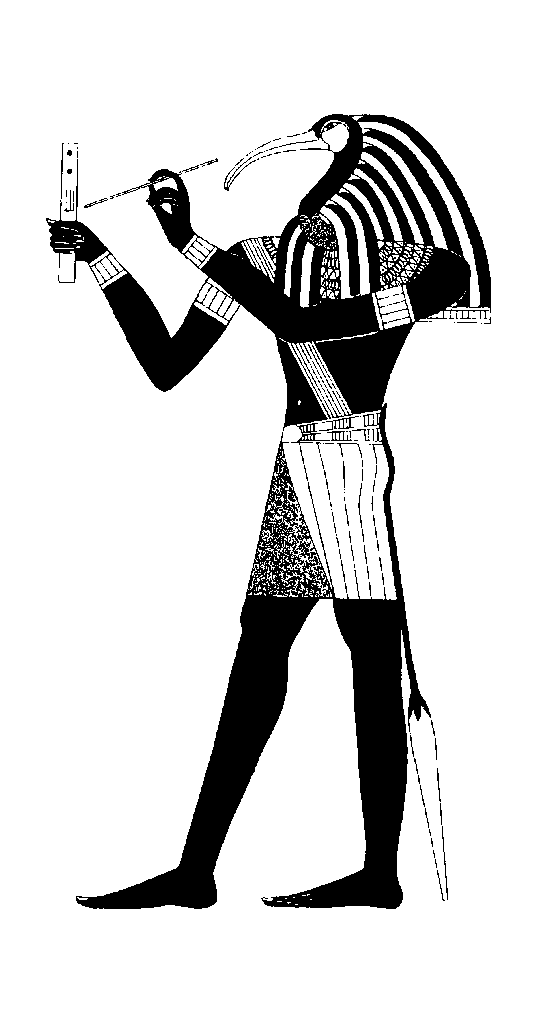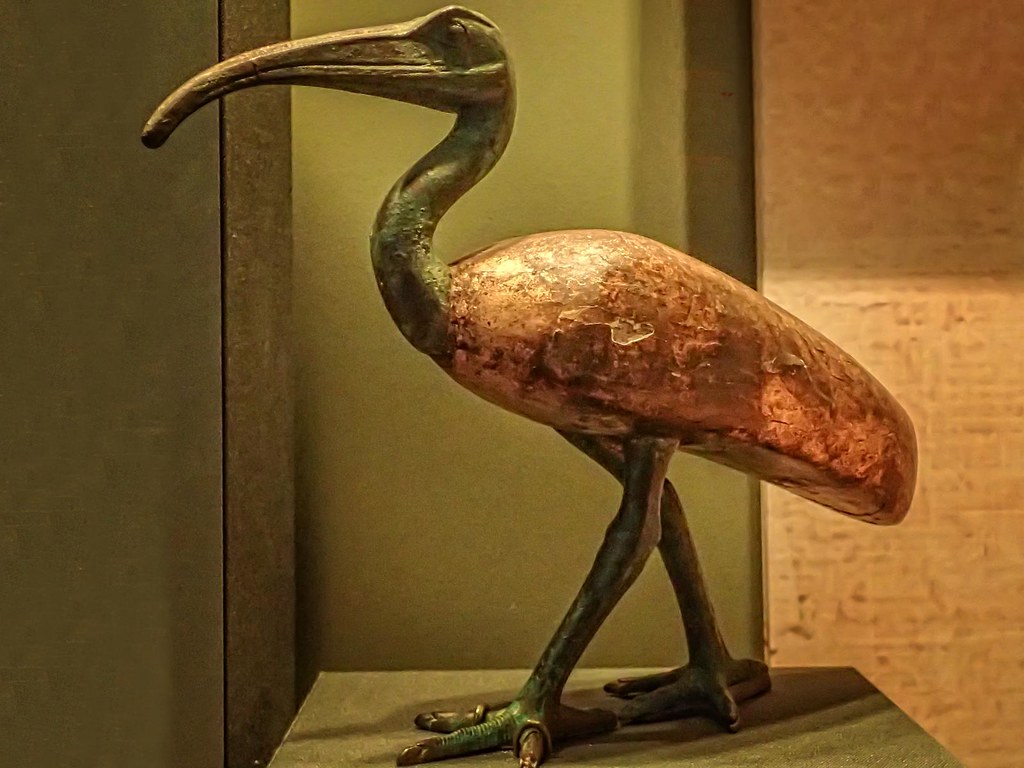Between 650 and 250 BC the Egyptians killed and mummified Sacred Ibises as sacrifices to Thoth, the Egyptian god of the moon, learning, writing, languages, magic and wisdom. The bird played a significant role in religious practices and is found in many burial sites. They were killed by the millions in religious rites; Herodotus, the Greek historian writing in the fifth century B.C., noted that the secular killing of the Sacred Ibis, whether intentional or not, was punishable by death.

At the archeological site of Saqquara, 1.75 million mummified ibises were discovered by archeologists. Four million more ibises, along with falcons and baboons, were found in the catacombs of Tuna-el-Gebel (as well as Abydos, Thebes and Kom Ombo). Mummies were in very high demand and religious adherents could purchase a small animal mummy to ask for a god’s favor or pay respect to the dead. This meant big business in the animal mummy trade. Ibis mummies, often crammed into conical jars, folded beak over body, or in a lifelike coffin, would mostly have been made in honor of Thoth.

Two types of Sacred Ibis mummies have been identified. One type were birds sacrificed in their millions to Thoth, as votive offerings to ask fulfilment of a prayer. The other type originated from ibis living in temples and worshipped as divine incarnations of Thoth. These were mummified after their natural death. There are very few of these sacred mummies compared to the votive ones.

There is an excellent article, The Role of the Sacred Ibis in Ancient Egypt, which describes in detail the methods of burial and mummification and decoration of the corpses. The author alludes to the idea that Sacred Ibises, because there are so many mummies, were not just captured in the wild but bred in captivity and raised by priests. Up until about 1825 most writings by historians and archeologists subscribed to the idea that Sacred Ibises were bred on large-scale farms. While ibis farms did exist it is debated if they alone could account for all the mummies.
A recent study published in PLOS ONE, Mitogenomic diversity in Sacred Ibis Mummies sheds light on early Egyptian practices by Wasef et. al. reports on the genetic research done to compare the genetic diversity of entombed specimens of ibises with those of present-day wild populations. If the birds were bred in large numbers in captivity, their genetic diversity would be limited and there would be differences in the populations between farmed areas. But it turns out that the genetic diversity of the mummified specimens is very similar to today’s wild populations. So although there may have been some small bird farming operations, Sacred Ibis breeding was not done on a large scale.
The Sacred Ibis is the most common and widespread of all ibises in Africa but it appears to be extinct in Egypt today. They disappeared about 1850, many years after the mummy era, most likely due to the draining of swamps which were their primary habitat.